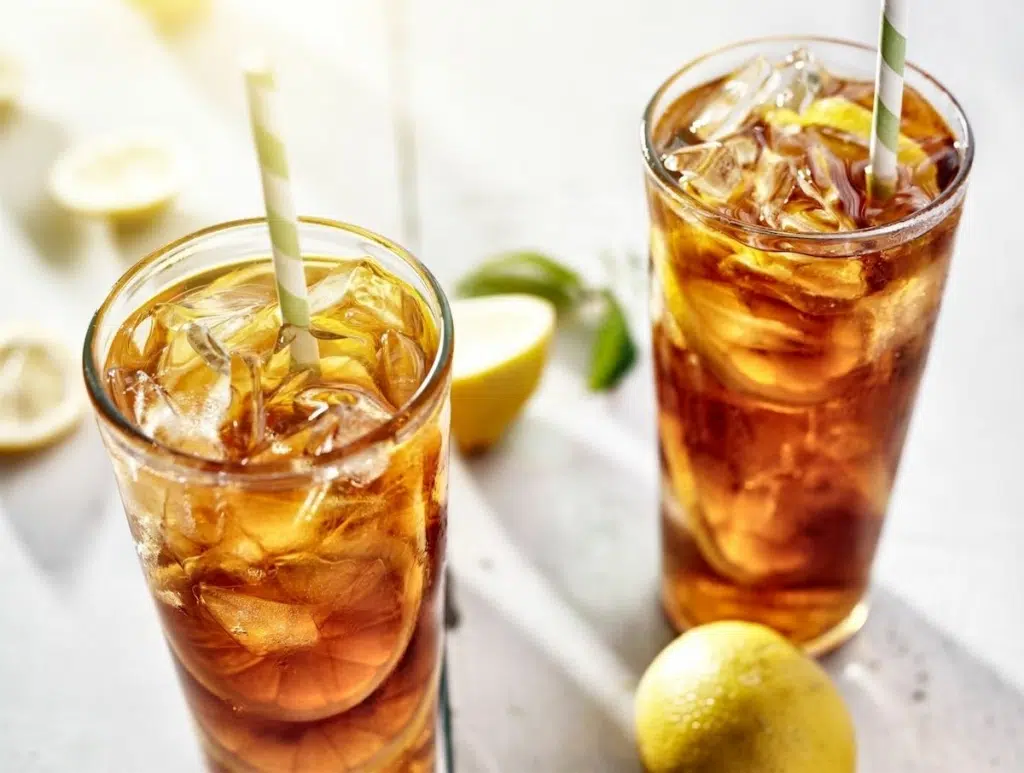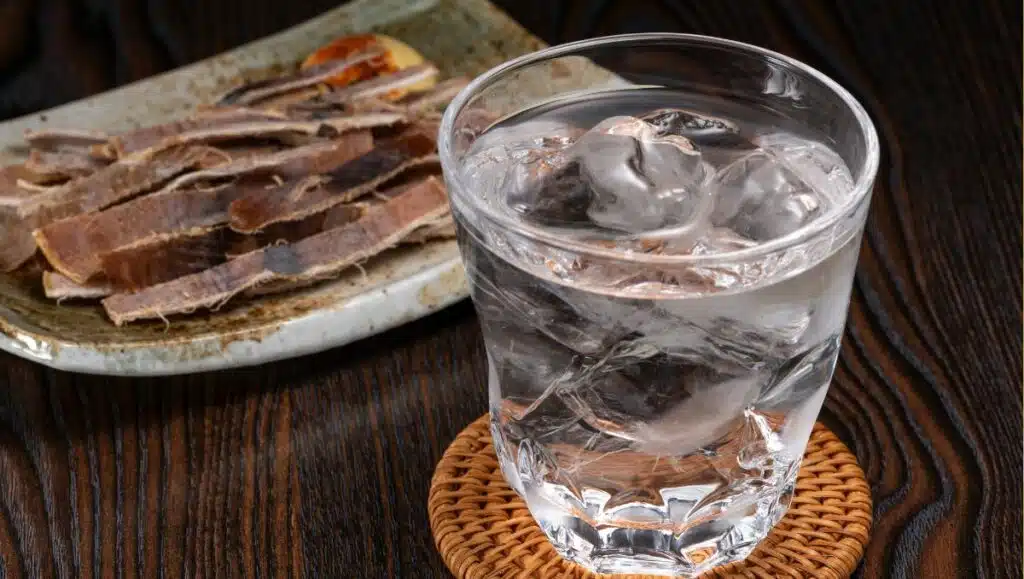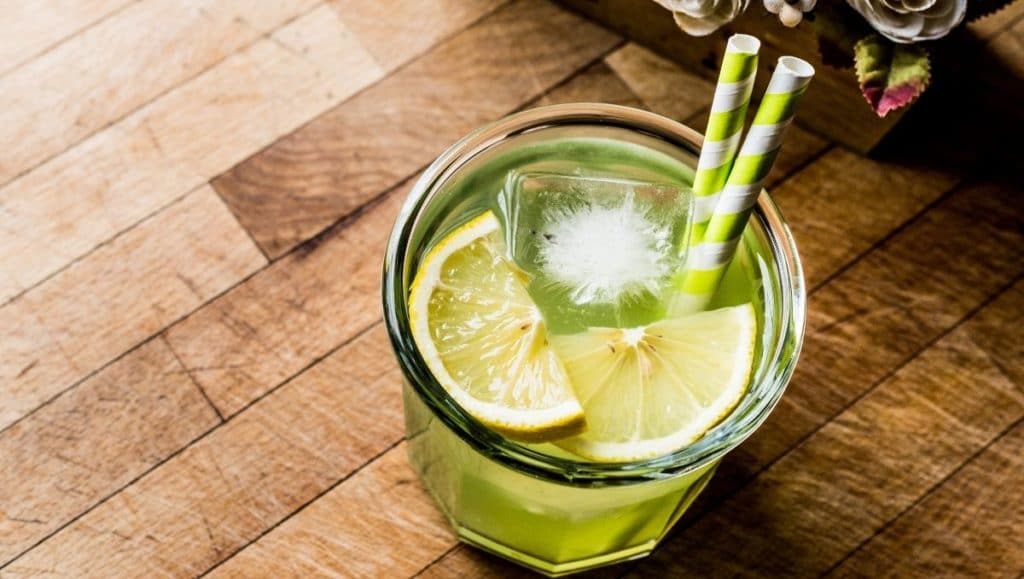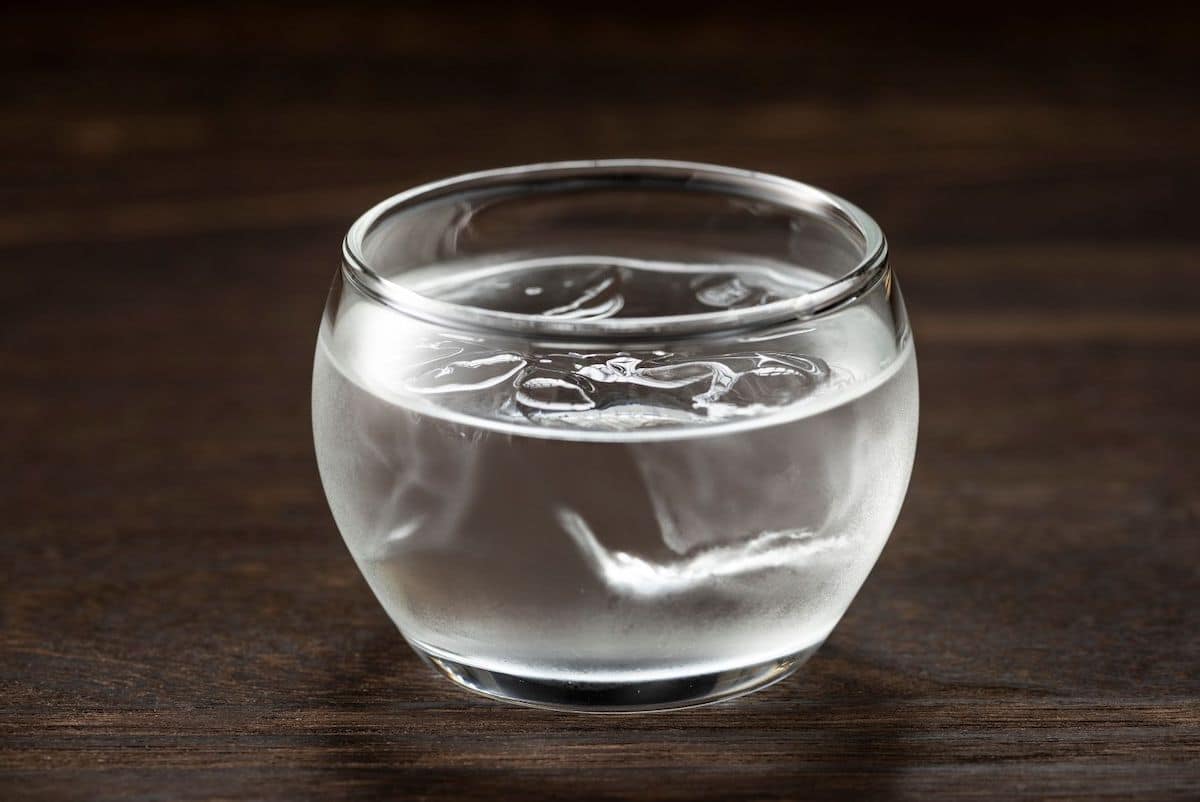When it comes to Japanese drinks, you may know Sake, Whisky, and some of their beers. But have you ever tried Shochu?
In Japan, Shochu is by far the most-consumed alcoholic beverage. Often consumed in Highball drinks like the Chu-hai or Oolong-hai, the distilled spirit is available everywhere, from pub-style Izakayas to fancy restaurants.
You can drink it neat, on the rocks, mixed with water, hot or warm, and even in cocktails. So what is Shochu?
Let's learn more about what the spirit is, how it's made, how to drink it, and what actually goes into this Japanese spirit.

What is Shochu?
Shochu is a Japanese distilled spirit that ranges between 25% and 35% ABV. It's Japan's favorite alcoholic beverage and can be made from various base ingredients like sweet potato, rice, barley, and more.
A mold called koji plays a vital part in Shochu production. This widely unknown fungus ultimately affects the aroma and taste of the resulting spirit.
What is Shochu made of?
Shochu is a distilled spirit that can be made with different base ingredients. In total, over 50 ingredients can be used to produce Shochu.
Although, by far, the most common ones are sweet potato, rice, barley, brown sugar, and others.
Besides the base ingredients, there are more things that go into the spirit. Probably the most important one is a mold called koji. This koji mold plays a vital role in developing flavor during fermentation.
Of course, yeast and water are also necessary to produce this alcoholic beverage. After all, the sugars need to transform into alcohol.

Koji - The secret ingredient in Shochu
Koji mold is a species of fungus often used in East Asia to saccharify rice and sweet potato. But the mold is also used for producing Shochu and Sake.
In Shochu production, the koji or koji-kin breaks down the fermentable sugars in the base ingredients. This way, the added yeast can work its job and convert sugars into alcohol.
The koji plays a vital role in Shochu making as the mold highly affects the taste of the resulting spirit. Generally, there are three different kinds of koji used in Shochu production.
- kuro, or black, koji mold
- ki, or yellow, koji mold
- shiro, or white, koji mold
Each of these three species works in a slightly different way, and ultimately defines the taste of the final product.
Kuro Koji (black)
Kuro, the black koji mold, is quite strong and is used to help with decomposition. The result is a rich, strong, and slightly sweet Shochu.
Kuro koji is commonly used for Awamori (from Okinawa) and Imo (sweet potato) Shochu.
The aroma of Shochu produced with black koji typically has a strong and rich aroma. The taste of these spirits is also quite rich with a subtle sweetness.
Ki Koji (yellow)
Ki koji, the yellow variation, is quite delicate, and it's hard to keep the perfect temperature necessary for this type of mold. However, the resulting spirits are worth the effort.
Shochus made with yellow koji mold are very smooth and light with a fruity flavor.
The aromas of ki koji Shochu are often fruity and elegant, and the taste is very light, smooth, and delicately fruity.
Shiro Koji
Shiro Koji, the white koji mold, is actually a mutation of the black kuro koji. The enzymes in this mold are particularly strong and can convert starch into sugar very quickly.
The resulting aromas and flavors of Shochu made with shiro koji can vary a lot. From very mild to plump sweet to quite sharp.
In general, sprits made of white koji have a very mild aroma. The taste, as mentioned, can be plump, sweet, or sharp.
Honkaku vs Korui Shochu
Japanese Shochu is classified into either Honkaku Shochu or Korui Shochu. Both categories use different production methods and are therefore also taxed differently.
Honkaku Shochu is the traditional way of producing Shochu. That makes sense, considering honkaku translates to authentic or traditional.
Honkaku Shochu has stricter regulations regarding its ingredients and is produced in a single-step distillation process. Connoisseurs regard it as the superior way of making Shochu. Therefore, it's usually more expensive than Korui Shochu.
Korui Shochu, on the other hand, has fewer restrictions and is distilled multiple times. This multi-step, or continuous distillation, process leads to a cleaner spirit with fewer impurities.
Unfortunately, the multiple steps also remove a lot of flavors and aromas. Hence, Honkaku is recommendable for consuming neat, and Korui Shochu is often used in mixed drinks or cocktails.
The different types of Shochu
Shochu comes in different varieties. Based on its ingredients, Shochu is classified as follows:
- Imo Shochu (made from sweet potato)
- Mugi Shochu (made from barley )
- Kome Shochu (made from rice)
- Kokuto Shochu (made from brown sugar)
- Soba Shochu (made from buckwheat)
- Shiso Shochu (made from Shiso herb)
- Awamori (made in Okinawa)
The last, Awamori, is a bit controversial. Some say it's a specific style of Shochu others claim it's a separate category. For now, I treat it as a substyle of Shochu.
Imo Shochu: Imo Shochu is widely considered the best Shochu. It's the most common type of Shochu you will encounter. And it is famous for its bold and aromatic taste.
Mugi Shochu: Barley Shochu made is very clean and crisp in taste. As this type isn't very intense in taste, you should sip it straight to get the most out of its aromas and flavors.
Kome Shochu: Kome Shochu is rice-based, just like Sake. The sweetness in the rice typically shines through in the Shochu.
Kokuto Shochu: In Japan, Kokuto Shochu is pretty famous, although only a few brands produce this variety. The smell is quite untypical for Shochu and has a lingering sweetness similar to Rum.
That is no coincidence because both spirits have a sugar base. Rum is based on sugar cane molasses, and Kokuto Shochu is made with brown sugar.
Shiso Shochu: This Shochu is made from the Shiso herb. Its taste is slightly sour with almost citric acidity. The flavor is quite refreshing, making it a perfect match for soda water in a Sodawari.
Soba shochu: Shochu made from soba noodles is crisp, clean, and aromatic. This Shochu is best enjoyed in combination with hot water in an Oyuwari.
Awamori / Okinawan Shochu: Awamori is usually mixed with cold water. Typical drink options are a Mizuwari (chilled still water) or a Sodawari (chilled soda water).
How Shochu differs from Sake
Shochu and Nihonshu, as Sake is also called, are very different. Shochu is a distilled spirit like Vodka or Brandy, whereas Nihonshu is a fermented alcoholic beverage like wine.
That also depicts the connection between these two spirits:
Brandy and wine are also made of the same base ingredients (grapes) produced in the same region (France, for example) but are not what one would consider similar. One is a distilled liquor (Brandy) and the other is a fermented beverage (wine).

How to drink Shochu?
The most common way to drink Shochu is neat or on the rocks. You can also add a splash of water or soda water. But that's not all.
Shochu is often served in combinations with water, hot and warm, and even in mixed drinks.
If you want to know more, read this guide on how to drink and serve Shochu. It covers many possible ways of imbibing the Japanese spirit.
If you're a fan of cocktails, check out this selection of the best Shochu cocktails. They are authentic Japanese cocktails, and many are on menus in Izakaya-style restaurants.

Is Shochu a Vodka?
Shochu is comparable to Vodka as, like the Japanese spirit, Vodka can be made from many different ingredients. -But Shochu is not Vodka but an own type of spirit.
Actually, Shochu is closer related to Arak. In the beginning, Shochu was even named Araki. Arak is a generic term for various distilled liquors throughout the middle east and parts of Asia. From Persia, Arak made its way to Asia and Europe.
In the 16th century, Arak came to Japan and led the way for Shochu. The first written evidence of Shochu in Japan dates back to 1559. I
n the Kōriyama Hachiman shrine in the Kagoshima prefecture, carpenters inscribed the following text into a wooden plank:
"The high priest was so stingy he never once gave us shōchū to drink. What a nuisance!"
Are Soju and Shochu the same?
Soju is the Korean counterpart of Shochu. Both are distilled spirits, and the names sound similar, but there are differences.
Besides being from different countries, Soju is way less restricted and can contain additives and flavorings.
Further, Soju typically ranges between 12% and 30%, with many options on the lower end of this spectrum. Shochu is higher in alcohol with 25% to 35% ABV.

